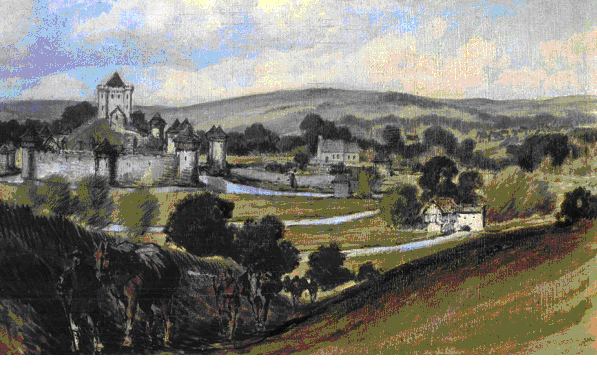Opened 1100 | ||
 | ||
Similar Beaumont Palace, Christ Church Greyfriars, Devizes Castle, The Merchant's House, Haughmond Abbey | ||
Marlborough Castle, locally known and recorded in historical documents as The Mount, was an 11th-century royal castle located in the civil parish of Marlborough, a market town in the English county of Wiltshire, on the Old Bath Road, the old main road from London to Bath (grid reference SU18376866). The barrow on which the fortification was built, perhaps the "barrow of Maerla" seems to be a prehistoric earthwork which formed the motte of the Norman Marlborough Castle. It survives as a tree-covered mound at the centre of Marlborough College.
Contents
History
In 1067, William the Conqueror assumed control of the Marlborough area and set Roger, Bishop of Salisbury, to building a wooden motte-and-bailey castle, sited on the prehistoric mound. A castle at Marlborough is suggested by the imprisonment and death there of Ethelric, bishop of Selsey, in 1070. William established the neighbouring Savernake Forest as a favourite royal hunting ground, and Marlborough Castle became a royal residence: Henry I spent Easter at Marlborough in 1110, which strongly suggests that it was inhabitable. During the Anarchy John FitzGilbert the marshal held Marlborough Castle for Stephen out of the fealty he owed him. Stone was later used to strengthen the castle, around 1175. From 1223 to 1224, Eleanor of Brittany, cousin of Henry III and with a better claim to the throne according to primogeniture, was briefly kept there as a state prisoner. After the death of Henry III, Marlborough lost favour as a royal residence. From 1273-1369 it was used only as a dower house: the castle, with the royal borough attached to it, was assigned in 1273 for life to Queen Eleanor (d. 1291), during whose tenure Edmund FitzAlan, 9th Earl of Arundel was born in the castle, 1 May 1285. In 1299 it was assigned to Queen Marguerite (d. here 14 February 1318), in 1318 to Queen Isabella, who was deprived of it in the period 1324–27, and in 1330 to Queen Philippa, on whose death in 1369 it reverted to the Crown.
Marlborough Castle ceased to be used in 1370 and fell into disrepair, but remained Crown property. Edward VI then passed it to the Seymour family, his mother's relatives.
The castle was in ruins by 1403. A new residence was built on the site by Francis Seymour, 1st Baron Seymour of Trowbridge (c.1590-1664), who had acquired the site from his elder brother William Seymour, 2nd Duke of Somerset (1588–1660). It was replaced in 1683-84 by the "new house" for his grandson Charles Seymour, 6th Duke of Somerset, apparently to designs by John Deane, a surveyor of Reading, Berkshire. The house forms the nucleus of the present Marlborough College. In the 18th century it was the beloved residence of Isabella, Countess of Hertford, the patroness of William Shenstone and James Thomson. Stephen Duck, the "thresher poet", described the house during Lady Hertford's time in A description of a Journey to Marlborough.... The house declined into a coaching inn, the Castle Inn, where the Marlborough Club, whose members were Tory gentlemen from Marlborough and the surrounding area, was established in 1774. The club met at the Castle inn until 1842; the house became the nucleus of Marlborough College, founded in 1843.
Present
This site is a Scheduled Monument. All that remains today of it is Castle Mound, a tree-covered earthworks mound, within the grounds of Marlborough College. Traces of Neolithic and Roman occupation have been found in the vicinity of the Castle Mound. Parts of the keep and curtain wall have been identified by excavation and a Roman coin recovered.
